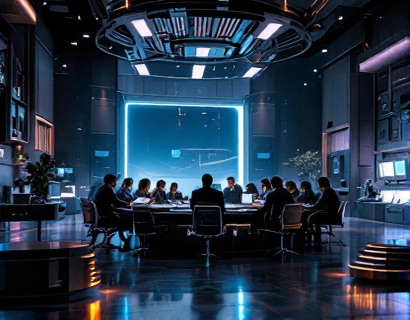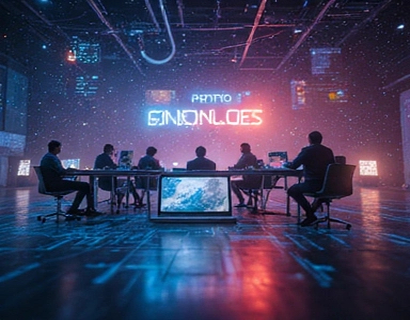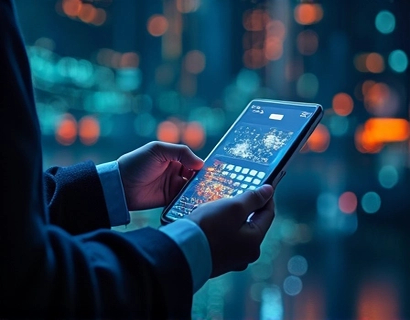Explore the Cutting Edge: A Curated Collection of Universal Apps for Enhanced Accessibility and Productivity
In an era where technology is rapidly advancing, the importance of accessibility and productivity tools has never been more critical. A curated collection of innovative apps is emerging, merging cutting-edge technology with universal accessibility to enhance the lives of users of all abilities. These applications are not just tools; they are gateways to increased productivity, creativity, and independence. This article delves into the world of universal apps, showcasing how they are transforming the way we interact with technology and each other.
The concept of universal design in technology is rooted in creating products and environments that are usable by all people, to the greatest extent possible, without the need for adaptation or specialized design. In the digital realm, this translates to apps that are accessible to everyone, regardless of their physical, sensory, or cognitive abilities. The apps featured in this collection are designed with inclusivity in mind, ensuring that users with diverse needs can benefit from the same advanced tools.
Enhancing Accessibility Through Advanced Technology
One of the most significant advancements in accessibility technology is the integration of artificial intelligence (AI) and machine learning (ML). These technologies enable apps to adapt to individual user needs, providing personalized experiences that enhance usability. For instance, AI-powered voice recognition apps can accurately transcribe speech to text, assisting users with hearing impairments or those who prefer not to type. Similarly, ML algorithms can learn a user's typing patterns and predict text, speeding up the input process for individuals with motor disabilities.
Another groundbreaking feature is the use of augmented reality (AR) and virtual reality (VR) to create immersive and interactive experiences. AR apps can overlay digital information onto the real world, helping users with visual impairments navigate their environment more safely. VR, on the other hand, can provide therapeutic benefits, offering controlled environments for cognitive and physical therapy sessions. These technologies not only improve accessibility but also open up new avenues for entertainment, education, and social interaction.
Boosting Productivity with Universal Apps
Productivity apps designed with universal accessibility in mind can significantly enhance the efficiency of users with various abilities. Task management apps, for example, use intuitive interfaces and customizable settings to help users organize their work effectively. Features like voice commands, screen readers, and high-contrast modes ensure that these apps are usable by everyone. Project management tools with built-in accessibility features allow teams to collaborate seamlessly, regardless of individual challenges.
Note-taking apps are another essential category, offering features such as real-time transcription, text-to-speech, and the ability to import audio recordings. These tools are invaluable for students, professionals, and anyone who needs to capture and review information quickly. The integration of cloud storage ensures that notes are accessible from any device, promoting a consistent and efficient workflow.
Creativity Unleashed: Art and Design Apps
The creative sector has seen a remarkable transformation with the advent of universal design in app development. Art and design apps now offer features that cater to users with different abilities, making creative expression more inclusive. Digital drawing and painting apps, for instance, provide customizable brushes and tools that can be controlled via voice commands or eye-tracking technology. This allows artists with physical disabilities to create stunning works of art without the limitations of traditional tools.
Graphic design apps with accessibility features enable users to design professional-quality visuals with ease. These apps often include built-in templates, drag-and-drop interfaces, and voice-guided tutorials, making the design process more approachable. Additionally, color blindness modes and adjustable font sizes ensure that the apps are usable by a broader audience, fostering a more diverse and inclusive creative community.
Education and Learning: Breaking Barriers
In the realm of education, universal apps are revolutionizing the way we learn. E-learning platforms with accessibility features ensure that students with disabilities can access high-quality educational content. Interactive lessons with audio descriptions, closed captions, and adjustable text sizes make learning more engaging and effective. Language learning apps with speech recognition and pronunciation feedback help users improve their skills at their own pace.
Special education apps are designed to support specific learning needs, offering personalized learning paths and adaptive exercises. These apps use gamification and interactive elements to keep students motivated and engaged. By breaking down barriers to education, these tools empower learners of all abilities to reach their full potential.
Everyday Life: Practical Tools for All
Beyond specialized apps, there are numerous tools that enhance everyday life for users with diverse needs. Calendar and reminder apps with accessibility features help individuals manage their schedules more effectively. These apps often include visual cues, voice notifications, and customizable alerts to ensure that users never miss an important event or deadline.
Shopping and navigation apps are also benefiting from universal design. Retail apps with voice search, high-contrast modes, and detailed product descriptions make online shopping more accessible. Navigation apps with audio guidance and tactile feedback assist users with visual impairments in moving around confidently. These tools not only improve independence but also enhance the overall quality of life.
Community and Support: Building a Inclusive Ecosystem
The success of universal apps is not just about the technology itself but also about the community and support surrounding them. Developers, users, and accessibility experts collaborate to create apps that truly meet the needs of diverse audiences. Feedback loops and user testing ensure that apps are continuously improved and remain relevant. Online forums and support channels provide a space for users to share experiences, tips, and solutions, fostering a sense of community and mutual support.
Moreover, educational resources and tutorials are essential for helping users maximize the potential of these apps. Video guides, step-by-step instructions, and community-driven content demystify complex features and encourage adoption. By empowering users with knowledge, these resources ensure that everyone can benefit from the latest advancements in technology.
Conclusion: A Brighter Future Through Inclusive Innovation
The curated collection of universal apps represents a significant step forward in creating a more inclusive and accessible digital world. By merging cutting-edge technology with universal design principles, these apps are not only enhancing productivity and creativity but also breaking down barriers for users of all abilities. As technology continues to evolve, the potential for innovation in accessibility is vast, promising a brighter future where everyone can thrive in the digital age.











































